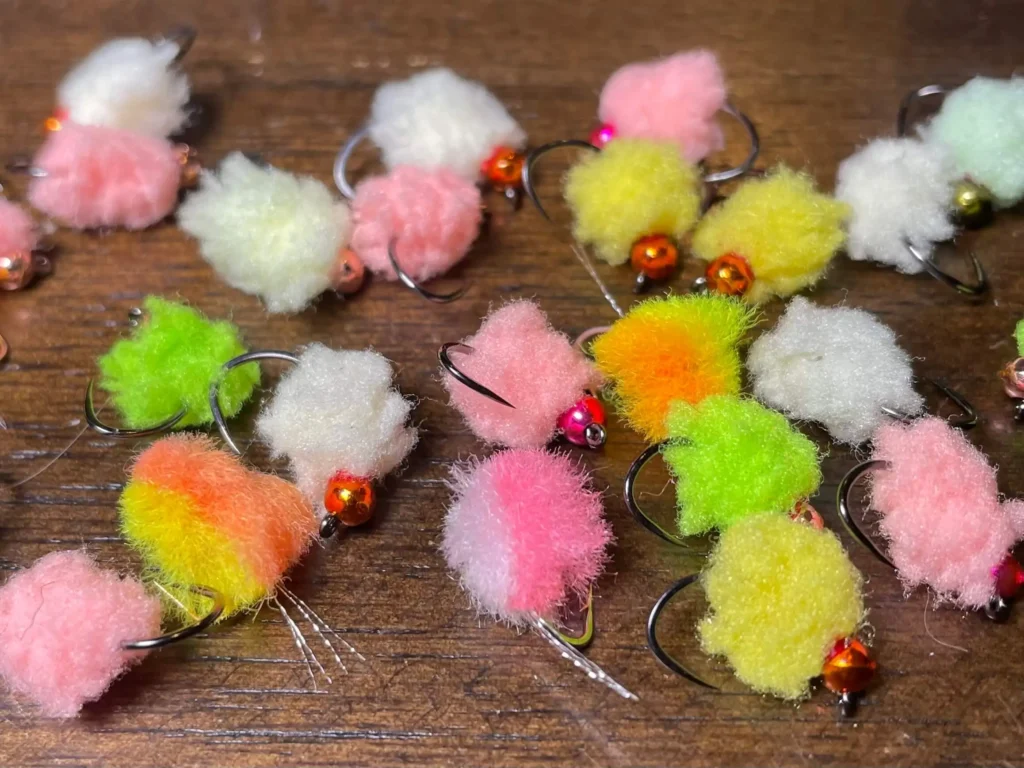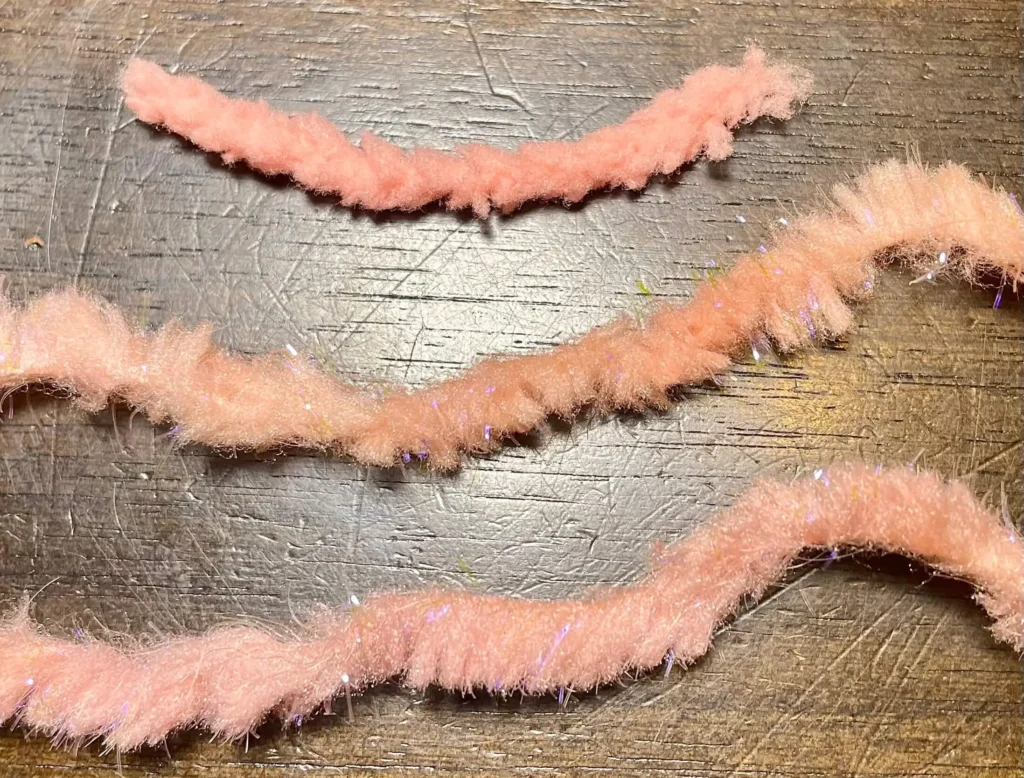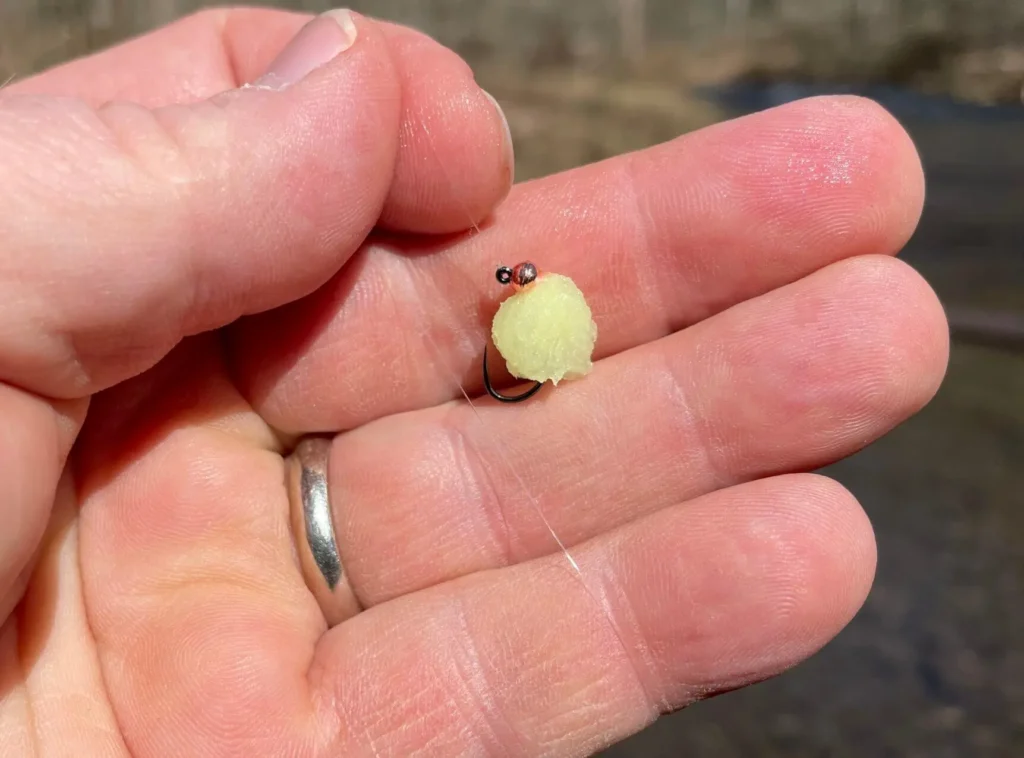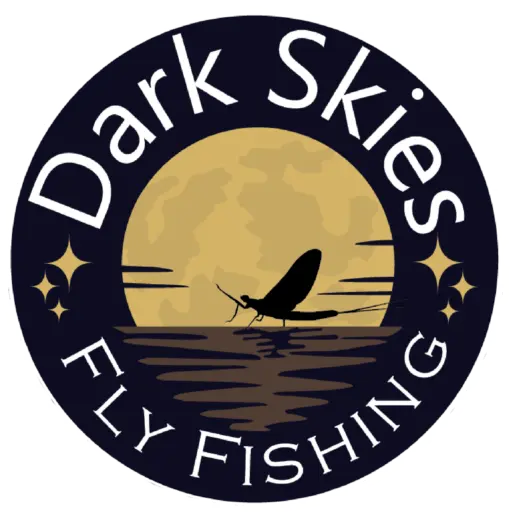Egg Patterns for Trout: Best Colors, Sizes, When, and How to Fish Them

Overall, I’d consider myself a little late to the egg game. When I first started fly fishing, Glo Bugs and Sucker Spawn seemed the rage, but using these flies often failed to consistently produce as many trout as I’d hoped, and quite honestly, I found that a good Prince Nymph or Pheasant Tail Nymph produced better results on a consistent basis. For me. I need to stress that “for me” part because experiences can differ drastically from one angler to another. In the past 10 years, though, egg patterns have become one of my go-to strategies. If I’m not catching fish, I tie on an egg.
A major reason for the change could be that egg patterns are more effective now than they’ve ever been, and the primary reason for that is technology. The new materials used to tie these eggs not only look realistic, but feel realistic to the trout, which ultimately results in more hook ups and fewer refusals. And with so many color options, you can whip up an egg pattern that will match almost any stream condition you’d ever encounter.
But therein lies the problem. With so many options, how do you know what colors and sizes you really need and should have in your fly box? Hopefully I can shed some light on this by telling you what my favorite egg patterns are, the colors I use most and why, and how I like to fish them.
Favorite Egg Patterns for Trout
My trout egg selection is very similar to my steelhead egg selection, which you can read about here, but there are some key differences. Many of these similarities and differences depend on the particular pattern and situation. In other words, I don’t tie every egg pattern in the same color and size. Some just seem to naturally work better when tied in specific ways.
Y2K – This is my overall favorite egg pattern, hands down. The contrasting colors used to create this pattern are perhaps the secret to its effectiveness. For trout, I tie it in three basic colors: white/pink, chartreuse/pink, and chartreuse/orange.
The Y2K is an excellent steelhead pattern, too, but the main difference between the Y2Ks I tie for steelhead versus trout is size. I’ll often use sizes 10 and 12 for steelhead; size 14 is my general starting point for trout. If water levels are up and a little off color, or I’m just fishing what I’d consider “big water” where you need something larger to be seen, then I’ll opt for a size 12. But for most small- to mid-sized streams, a size 14 Y2K is about ideal for trout.
Y2Ks are tied with standard egg yarn, or Glo Bug yarn, if you prefer to think of it that way. Take two strands of contrasting colors and split them in half. You can control how dense or sparse, opaque or translucent you make the egg (and thus how quickly or not it sinks) by using thicker or thinner strands of yarn. Thinner will sink faster but have a slighter, more translucent appearance.
For this pattern, I like a 1x short, 1x strong curved Caddis hook like the Model 10 offered by Wholesale Fly Company. (A quick note about Wholesale Fly Company. This is not an affiliate link, and I do not earn commission for sales. I have been using their products for years and recently invited them to sponsor the Dark Skies Fly Fishing Magazine, which they did. But I only asked them to be a sponsor because I enjoyed using their products.)
For a size 12, I add a 7/64 bead, and for size 14, a 3/32 bead. Feel free to over-bead this pattern if desired, especially if you’re a Euro nympher using tungsten. A sparsely tied size 14 Y2K with an oversized tungsten bead will drop like a rock through even deep, swift current.
Start by putting down a good thread base on the hook shank. Tie in three or four strands of white fluorofiber for a short tail approximately one hook gap in length. Advance the thread to behind the bead.
Lay the married halves of yarn along the hook shank and secure behind the bead with three to four firm wraps of thread. Split the colors with your thread and make another three to four wraps between the colors. This will prevent the finished egg from spinning on the hook once completed.
After whip finishing the head, trim the front of the two strands of yarn even with the front of the hook eye. Trim the tail end of the yarn even with the bend of the hook. Behold, a completed Y2K!
Almost any color combination can be used, but the ones already mentioned are my favorites. As a change up I’ll use purple/champagne, particularly on very bright days when the water is crystal clear and on the low side.
Eggstasy Eggs – These are my second favorite egg pattern for trout. I tie these on a size 10 for both steelhead and trout. However, the size of the egg (its profile) will directly result from the brand hook used, and there can be a lot of variation from brand to brand.
I prefer a 2x short, 2x strong hook like the Model 12 available at Wholesale Fly Company in size 10. Even though it’s a size 10, this is a low profile hook that produces a nice tidy looking egg for trout and yet is sturdy enough to handle steelhead. I prefer a 1/8 bead in this pattern, brass or tungsten.
The Eggstasy Eggs I tie specifically for Euro nymphing, though, are tied on two different styles of jig hooks. I use a jig hook such as the Model 20 sold by Wholesale Fly Fishing in size 12 if I’m tying with Flybox NX-Gen Fibre, which has a smaller profile than Cascade Crest’s Eggstacy Chenille and Spirit River’s Roe Yarn. If tying with the Cascade Crest or Spirit River products, which have a larger profile, I like jig hooks with a wide gap, such as the Model 27 in size 12.
Eggstasy chenille/yarn can vary from brand to brand. The Flybox NX-Gen yarn produces a small, clumpy egg, but when wet takes on a very realistic, yolky look. It almost seems to pulsate in the water. Trout love it. If you want a larger profile on a larger hook, you can use a wire brush to fluff out some of the clumps.
The Flybox Eggstasy NX-Gen Fibre should not be confused with Spirit River’s Roe Yarn, although both can be used to tie Eggstasy Eggs. Where it gets really confusing is that other brands, such as Cascade Crest’s Eggstacy Chenille, look very similar to Spirit River’s Roe Yarn.
Both materials by Cascade Crest and Spirit River produce effective Eggstasy Eggs, and I use them a lot for larger eggs, sizes 8 and 10, especially for steelhead and salmon. I also tie it on size 10 for trout, using the 2x short 2x strong, straight-eyed shank. I don’t particularly like it for size 12, though, due to its bulk. For size 12 and smaller, the Flybox NX-Gen Fibre is ideal.

To tie this fly, place the bead on the hook and lay down a good thread base. Some people like to tie in a tail of some sort, such as with fluorfibre, and I used to do this, too, but nowadays I think it’s unnecessary. It doesn’t hurt anything, but I don’t think it makes a huge difference in the fly’s effectiveness.
Cut a length of yarn. The yarn has a grain to it and you’ll notice it sweeping one direction or the other, which is easier to notice with the Roe Yarn and Eggstacy Chenille than with the NX-Gen Fibre. Strip the loose fibers off the front of the material to reveal the cord base. Tie in the yarn by the base and take four to five touching wraps forward and tie off behind the bead. Super simple.
For stocked rainbow trout, a pink Eggstasy Egg is absolute killer. The more recently stocked the fish is, the more it will jump on a pink egg.
When I’m fishing a wild trout stream, though, I opt for more natural-colored eggs. Flybox makes a great color called Fluorescent Cheese that has produced a lot of wild browns for me at all times of year. Native brookies seem to like it a lot, too.
At certain times during the spring when suckers spawn in various waterways, the Sweetcorn color made by Flybox NX-Gen Fibre is the absolute bomb!
Below is a video showcasing three deadly fly patterns, two of which are the Y2K and the Eggstasy Egg. Although I specifically tie these for steelhead in this video, they are tied for trout the same way except on slightly small hooks, as mentioned above.
Sucker Spawn – This an “oldie but a goodie” as far as egg patterns go. Although it will catch stocked trout all season long, it serves a very specific role for wild fisheries. Every spring, when water temperatures reach 50 degrees F, the white sucker will start to spawn. They will congregate in riffles, shooting out their eggs and milt in a frenzy of action, and mixed amongst and directly downstream of them, gulping down eggs, will be scads of trout. These trout literally line up to take advantage of this prime feeding situation, which may not last more than a few hours on most streams. But when you experience it, you’ll never forget it.
Sucker eggs are found in small clusters and are typically pale yellow in appearance. Tie your imitations in sizes 14 for most trout situations and 12 for steelhead.
A note about Meth Eggs, or Crystal Meth Eggs. These are basically souped-up Sucker Spawn tied with sparkly diamond braid instead of standard yarn. Although these are a great steelhead pattern, I very rarely use anything this sparkly for trout. I prefer not to overdo it with sparkle on my trout egg patterns. They can be bright colors, but they seem to perform best without an excess of flash.
I use the 1X strong, 1X short curved caddis Model 10 hook for my Sucker Spawn, too. To tie the Sucker Spawn, take two strands of yarn about five inches in length and secure them to the hook shank approximately in line with the barb of the hook (or where the barb would normally be, if using barbless). Fold the yarn forward to create a small bubble and secure it with a few wraps of thread. Create a second bubble, slightly larger, and a third slightly larger than the second, each time securing the yarn in place. The fourth bubble, though, should be slightly smaller than the third. After securing this last one down, trim the material and whip finish.
Sometimes a small tail is added to the Sucker Spawn, such as a few strands of fluorofibre, but it’s not necessary. Meth Eggs are tied the same way as Sucker Spawn, and I do add the tail for a little extra sparkle on those for steelhead.

General Tips for Choosing the Right Egg Pattern
The most important factor I consider when choosing an egg pattern, and especially color, is the type of water I’m fishing. If it’s a stream with predominantly wild trout, I opt for smaller, more naturally colored eggs. This often means pale yellows, pale oranges, and pale pinks compared to the vivid fluorescent colors such as chartreuse.
For stocked fish, especially stocked rainbow trout, bright, eye-catching colors do the job. I’d contend that there’s no better color for stocked rainbow trout than a Shrimp Pink Eggstasy Egg. Also, the Y2K excels on stocked rainbows, I believe, because of its contrasting colors.
Another factor to consider is time of year, or season. For instance, in streams and rivers with good populations of suckers, a Sucker Spawn in pale yellow or orange is a must-have fly. Fish this pattern and these colors when water temperatures first reach that 50 degree mark in early spring.
There are seemingly endless colors of egg yarn, roe yarn, foam and other materials to choose from for tying egg patterns. Do you need them all? No. Although certain colors will excel in certain situations, truth is, many of those situations will occur rarely at best, and even then, “close enough” is often good enough to get the job done.
When selecting which colors to tie my egg patterns, I try to hit at least one example of each color group. For instance, a green, an orange, a white, a cheese, and a pink. So my typical fly box for trout has a selection that includes:
- Size 14 Y2K in Pink/White and Chartreuse/Orange
- Size 10 or 12 (depending on hook brand) Eggstasy in Chartreuse, Sweetcorn, Fluorescent Cheese, Shrimp Pink, and White.
- Size 14 Sucker Spawn in Pale Yellow and Orange.
These are the colors that I use most often and find will cover a wide variety of situations. However, I do keep a few in my box for special occasions, such as the purple/champagne specifically for fishing low, clear water.
On bright sunny days, I typically use duller colors. My first choices are a Pink/White Y2K, or Eggstasy Eggs in peach, white, and fluorescent cheese.
On dark days, or high and off color water, brighter colors are usually my first choice. Chartreuse/Orange Y2K, Chartreuse Eggstasy Egg, or Shrimp Pink Eggstasy Egg all perform well for me.
Tips for Fishing with Egg Patterns
First of all, there’s never a bad time to fish an egg pattern. Eggs are a natural food source available practically year round to trout. If you really want to optimize your color and size choice, figure out when fish such as suckers spawn in your local stream and research what size and colors those eggs are likely to be. For example, when water temperatures hit 50 degrees in this region of the country, usually March through April, suckers will spawn. Fish your egg patterns downstream of where suckers are known to spawn in particular streams and you can have a tremendous day.
Second, I use egg patterns a lot in tandem rigs, particularly under an indicator. I’ll often drop a small, natural looking nymph off the bend of the hook using about 12 inches of tippet. Often, the egg will get the trout’s attention and the smaller fly will seal the deal.
Third, I fish egg patterns very slowly. Think about how a natural egg moves along the stream bottom. It bounces and rolls, usually at a speed slightly slower than the current. The more closely you can imitate this, the more success you’ll have fishing with eggs.
Fourth, pertaining to color selection, a general rule of thumb is to use bright colors in murky water. As the water clears, I tend to shift toward more natural colors such as white, off-white, peach, and salmon egg.
Color can be extremely important and mean the difference between lots of trout and no trout. A few years ago, on Pine Creek in Tioga County, I picked up a couple trout on a pink/white Y2K and thought I was doing okay. After losing the fly, I tried a chartreuse/orange and absolutely hammered them the rest of the evening. And it made sense. The water was a little off color from a recent rain. The brighter colored egg was likely more visible.
Conclusion
Looking back, I probably gave up on egg patterns too quickly in my younger years. I’m sure those Glo Bugs and Sucker Spawn would’ve worked just fine if I’d known what colors to use and when, what sizes, and how to fish them better. And, maybe even more importantly, used them enough to gain confidence in them.
But I do know that the materials today help fishermen tie some realistic eggs. They sure look good to me, and the trout seem to like them, too. The more fish I catch on the egg patterns mentioned here, the more I have confidence in them, and that’s ultimately why I always have an egg pattern close at hand.
Looking to take your fishing to the next level?
Book a day on the water where we can show you how to read the water, make better presentations, catch more fish, and enjoy time spent outdoors more than ever before.
Book Now!Did You Find This Article Helpful?
Stay up to date with the Dark Skies Fly Fishing monthly newsletter for free and receive the latest posts in fly fishing news, tricks, tips, and techniques, stream reports, as well as updates on new flies added to the Online Store and exclusive discounts!
Sign Up Now
Nice post Ralph. I too have not used eggs enough and I plan to use them more liberally this season.
Keep E’m Wet
Thanks for taking the time to drop a comment, Jerome. Much appreciated. I have no doubt they will produce many trout for you this season!
Great article, Ralph! I’m a sucker for Eggstasy yarns. Intended pun soon to be realized. This is mostly because of the affection I harbor for the homely white sucker which remains a favorite fish species of mine. I love these ugly yet compelling fellas. And, ladies! I recently discovered that the florescent peach Eggstasy egg is a killer pattern when fishing for wild browns during the real-deal spring time sucker spawn! It is a great imitation of natural sucker eggs and milt as it takes on that slimy, gelatinous texture when saturated. See our article about this event exclusively in the blog posts!
Justin